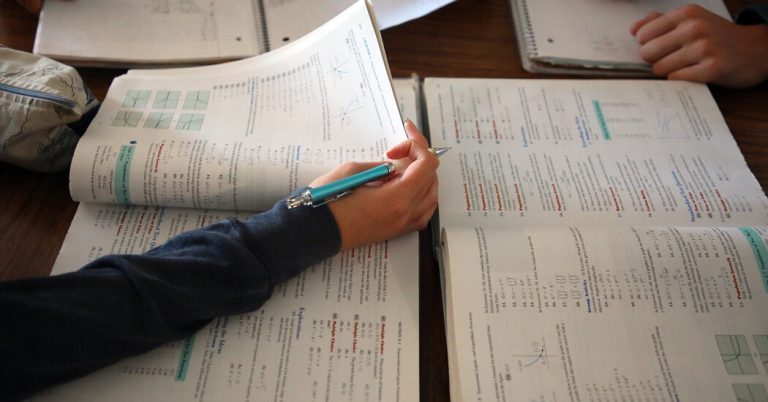For the past three years, US schools have been in an unusual position: they’ve had a lot of money to spend.
The federal government has invested $190 billion in pandemic aid for schools. the largest chunk, $122 billion, came in 2021 to help students recover. Overall, it was the largest single federal investment in American education, but it came with a major question: Would it work?
Two separate studies, released Wednesday, show the money helped, but not as much as it could have.
“Money did contribute to the recovery,” said Thomas J. Kane, an economist at Harvard University who helped lead one of the studies. “Could money have had a bigger impact? Yes.”
The studies — one by researchers at Harvard, Stanford and Dartmouth and the other by the University of Washington — reached similar conclusions based on test results from the 2022-23 school year for third- through eighth-graders in about 30 states. . For every $1,000 in federal aid spent, districts saw a small improvement in math and reading scores.
The Biden administration celebrated the results as proof that the federal government’s investment in March 2021, when the pandemic was still active and some schools remained closed, helped get students back on track. “This new data makes it clear that the president’s investment in education has helped millions of students regain ground faster,” said Neera Tanden, President Biden’s domestic policy adviser.
But the overall dollar boost was modest, according to economists and education policy experts. Previous research has found greater dollar return from smaller categories, for example.
There may be other benefits not reflected in test scores, such as improved mental health for students, said Douglas N. Harris, an economist at Tulane University who was not involved in the research.
Based on test scores alone, he said, “it doesn’t pass the cost-benefit test.”
In a country with almost 50 million children in public school, it is difficult to achieve large results at scale. And even small improvements in test scores can have long-term benefits, increasing students’ future earnings.
But the overall results raise questions about whether the record amount of federal aid was accompanied by the appropriate levels of oversight.
Congress placed few restrictions on the largest round of funding. Of the $122 billion, districts were required to spend just 20 percent on academic recovery, which many education experts have criticized as too little.
“If there was more pressure around academic achievement and using the money for that purpose and more drivers, I think it’s possible the money would have made a much bigger difference,” said Dan Goldhaber, co-author at the University of Washington. study and vice president at the American Institutes for Research.
The Biden administration said the money was intended to give school districts significant flexibility to respond to local needs in a time of crisis. It has focused on issuing guidance to regions, highlighting the need to invest in tutoring and summer schools, for example.
But with more than 13,000 school districts across the country and few direct requirements, there was enormous variation in how the money was spent.
Some districts have engaged in frequent, small group instruction, which research has shown to be effective. Many hired new people: teachers, counselors and social workers. Others funded school building renovations. Still others, facing budget problems, used much of the money for their regular operations and are now facing severe cuts.
The new studies did not assess which strategies earned the best results, in part because there was little tracking of exactly how federal dollars were spent.
Other research shows that choices mattered. Some districts have shown big improvements, often focusing on research-backed academic interventions and student mental health.
Ultimately, however, many students are not catching up on pandemic learning losses, especially as federal aid ends this coming school year.
But, as education experts said, money did move the needle. Without federal aid, students may have fallen further behind. The aid was targeted at low-income school districts, which suffered the most during the pandemic and distance learning.
“The dollars have been effective in filling some of the gaps that have opened up,” Professor Kane said.
And test scores may still be improving as schools reap the benefits of long-term investments like HVAC upgrades and cleaner air, said Rebecca Sibilia, executive director of EdFund, a research and policy group focused on school finance.
A large body of research shows that increased spending on education is associated with improved student outcomes, especially for students from low-income families.
In some ways, the results only underscore the enormity of the pandemic’s impact on students, who fell far behind, especially in math.
At the current rate of recovery, studies show it would take up to five times as much federal aid to fully make up the gap.




